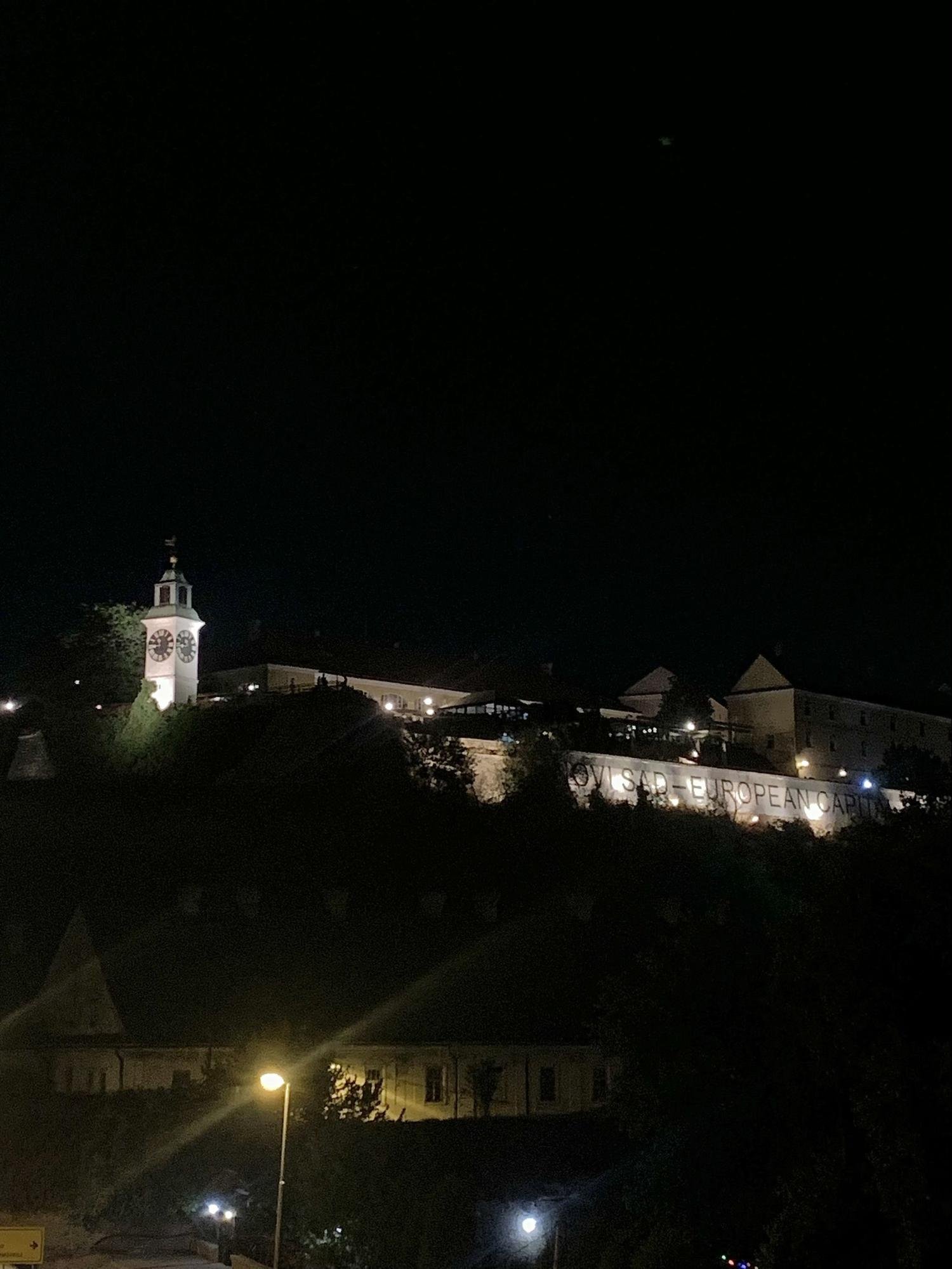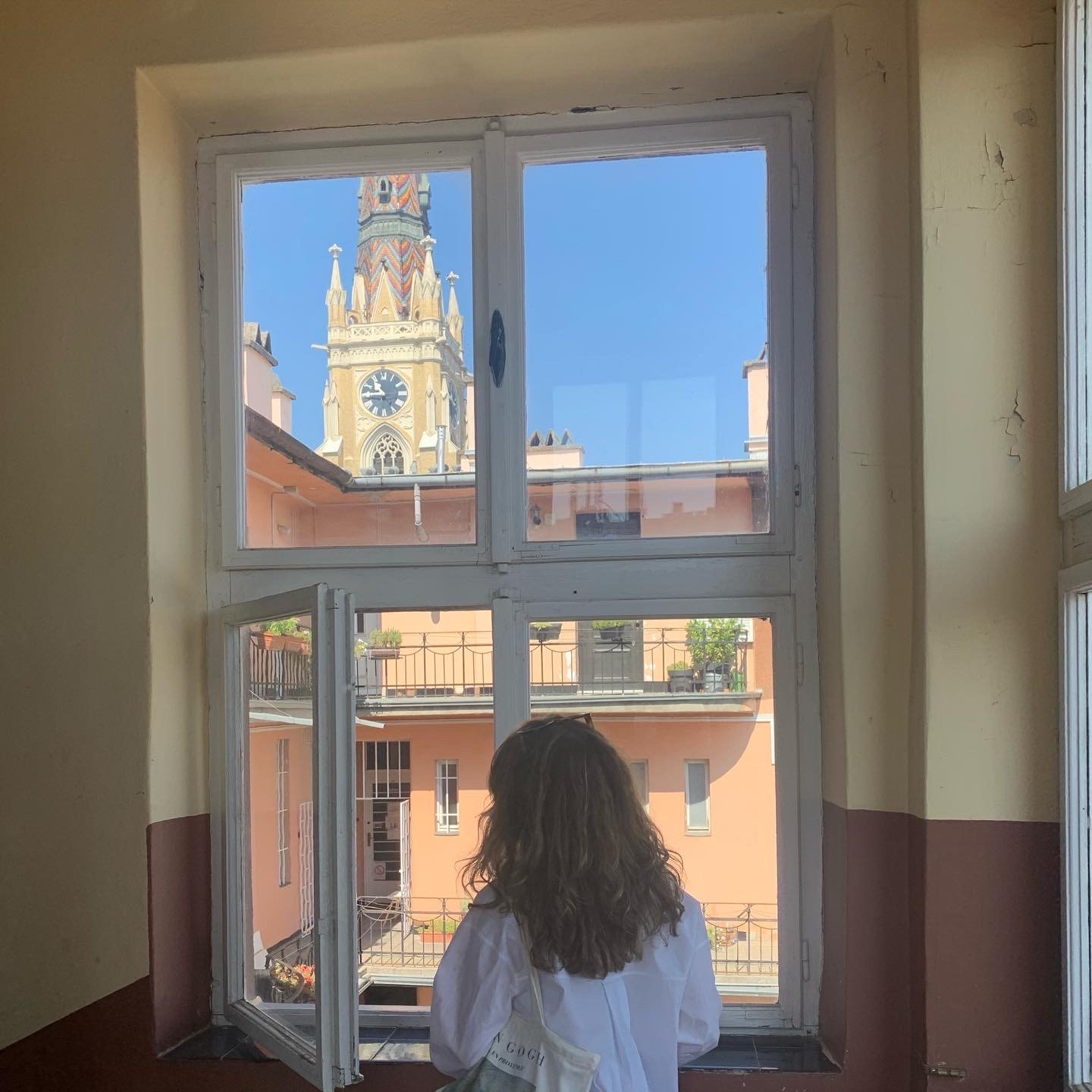I spent the summers of my childhood frolicking in the concrete jungle of Belgrade, Serbia. It was my refuge — an enclosed playground of parks mossed in sizzled grass amidst sprawling pedestrian walkways lined with vendors, the smell of baking pastry and chatting grandmas that howled greetings from their balconies. There was always movement, a city that truly never sleeps, my best-kept secret.
There is something magical about coming back to a place that provided the setting for so many family stories, but after three years of Vancouver summers, I decided I needed to visit Novi Sad, the city where my grandma spent the beginning of her professional career as a pioneering coder in the 60s.
Planning this trip was one of the most spontaneous things I have ever done. One afternoon my friend and I were booking train tickets and an Airbnb, and the next, we were standing in front of Name of Mary Catholic Church after a 30-minute ride on Serbia’s rapidly growing Soko rail system.
Like the remainder of the Balkans, Novi Sad — which translates to “new plantation” in Serbian — was always a crossroad.
Novi Sad has an immensely diverse and tumultuous history which makes for a vibrant local culture. Before the unification of Yugoslavia in 1918, it was a hub for the minority Serbs in the Austro-Hungarian Empire and was only a small fishing village on the Danube River up until the 18th century. It is now the capital of Vojvodina which is an autonomous state between Serbia and Hungary. It was voted Europe’s Centre of Culture in 2022.
On our first afternoon there, we were met with the beating sun. The air was thick and weighed us and our bags down as we hailed a taxi. The city was quiet and lazy, a stark juxtaposition from around the same time the month before when Novi Sad was buzzing as all of Europe packed the streets for the annual Exit Music Festival.
We spent our first evening walking through Zmaj Jovina promenade, a quaint pedestrian-only street where buzzing cafes and apartments whose terraces bloomed with flowers lined the street, the low hum of music constantly in the background of the conversation. Novi Sad is special in its ability to distinctly capture all the different cultures that have influenced the area. Rather than being a melting pot, one can experience the cobblestones of Hungary next to Habsburg architecture, along with the smells and sounds of the Balkans.
On our balcony overlooking the town square, we enjoyed Southern Serbian wine and cheese as street lights lit up the sky over Fruška Gora National Park as an accordion pierced the air in the local bistro below us.
Our next afternoon was spent pacing through the aisles of multiple bookstores. The bookstore found off of Zmaj Jovina at the bottom of a flight of marble stairs and built into a tunnel lined with cooling cement was alluring and inviting. I was immediately transported into a summery taverna. It was there that I finally found a Serbian copy of Garden, Ashes by Yugoslavian-Jewish author Danilo Kiš.
In the evening, we visited the Novi Sad Student Cultural Centre for the second evening of the Novi Sad Film Festival. We watched an independent Italian film following the story of a group of unlikely friends who devise a plan to smuggle an illegal immigrant hoping to cross the border into France. Our small makeshift theatre mounted in an industrial ex-factory provided the perfect setting for the film’s mosaic jazz and orangey-blue cinematography.
The following day we sat under the shade of an umbrella on Štrand Beach along the banks of the Danube. While the music boomed, children giggled and the smell of burning cigarettes hung in the heat, it was almost impossible to fathom that just 80 years ago the Novi Sad Massacre happened in this spot. While the joy of beach-goers could be felt, there was still a haunting melancholy in the air.
We caught the sunset at Petrovaradin Fortress, which overlooks the city. As we watched the sky blaze purple, orange and pink, two women — around our ages — asked if we could take a photo of them. Of course, we obliged and they returned the favour. We briefly chatted about the city and what it was like to come to a place that seemed so familiar and yet that we knew little about. The four of us are daughters of Yugolav immigrants.
I have always admired this mentality of connecting with the strangers around you. It narrows the gap between us. We have more commonalities than differences. This habit is perpetuated by many people who identify with the area, and something that I appreciate I was able to observe for as long as I can remember. Indeed, communal support and find value in being part of a system greater than yourself is a part of the wider Balkan culture.
We sat in a restaurant that night where we could hear every language we could think of being spoken. There was a soccer game running silently on a TV as people alternated between cheering and chatting.
The next morning the man who ran the souvenir shop we were admiring told us stories of North America — his adventures in Chicago, his business in New York, how his American grandson uttered his first Serbian words on his balcony while visiting him in Novi Sad and even his visit to Vancouver.
Then he sighed and glared up at the sun beating down on us, unbothered and smiling. “Nothing ever stays the same,” he remarked. I could see the parallel between my own grandfather, an internal rift between love for a place and time that does not exist anymore and the excitement of adapting to a promised land that brought so many immigrants to major North American hubs. This was our last conversation with a local before we had to catch our train back to Belgrade.
This trip was refreshing. Locals wise with stories and eager to share greeted us at every corner and we felt the city beat in a way you can only feel if you have grown up knowing that pace of life. In the beginning, I was anxious that we did not have a concrete plan — but that turned out to be the best part of our stay. There was something about the heat mixed with our curious wandering that made those two and a half days feel like an innocent dream. And yet, there was still so much we did not get to on this trip that I must save for next time. My origins trace back to a land laden with tradition, stories of love and hate, colour and life. And I am excited to be back soon.
Places to Go is The Ubyssey's travel subsection. If you are going or recently went somewhere cool and want to write about it, email features@ubyssey.ca.





